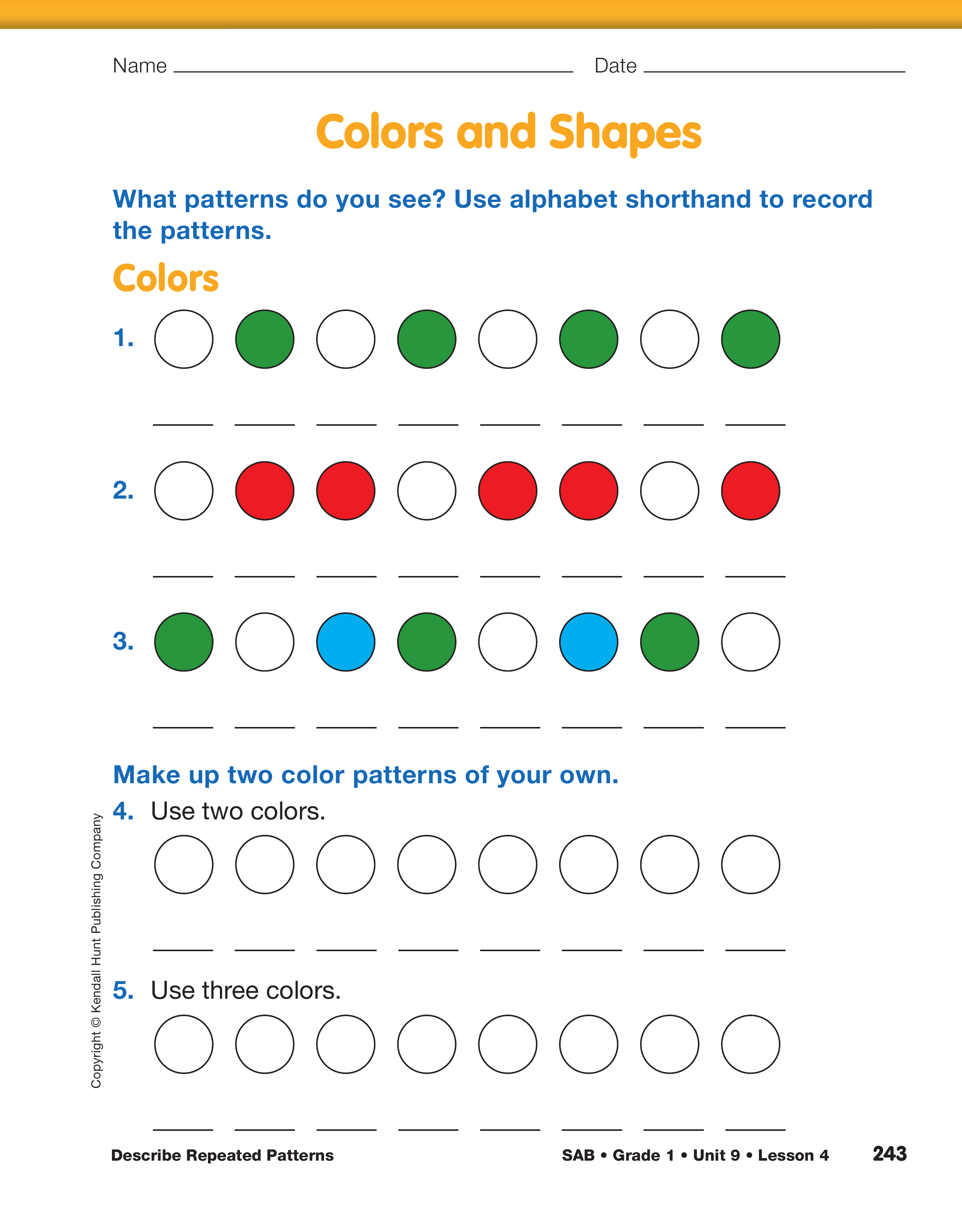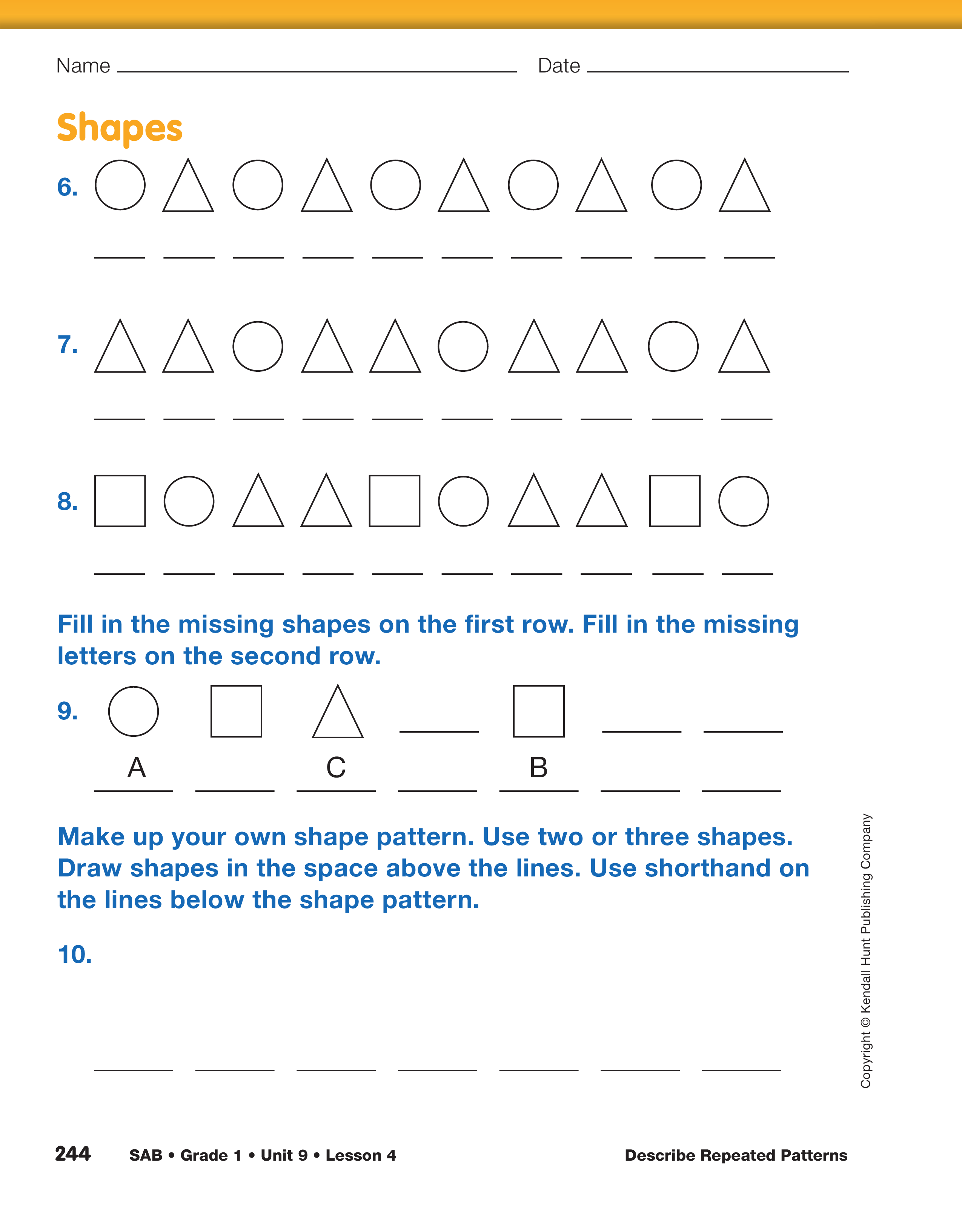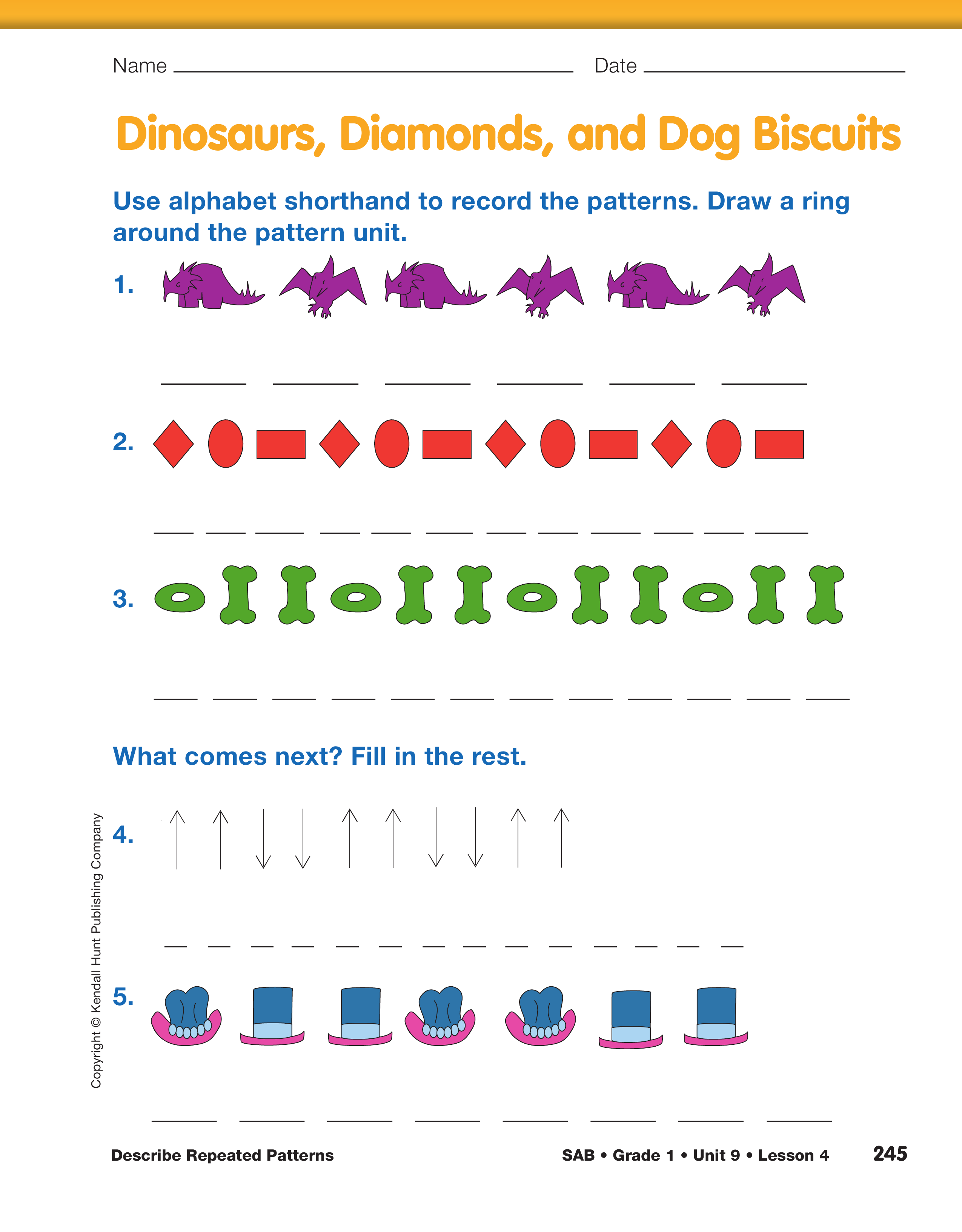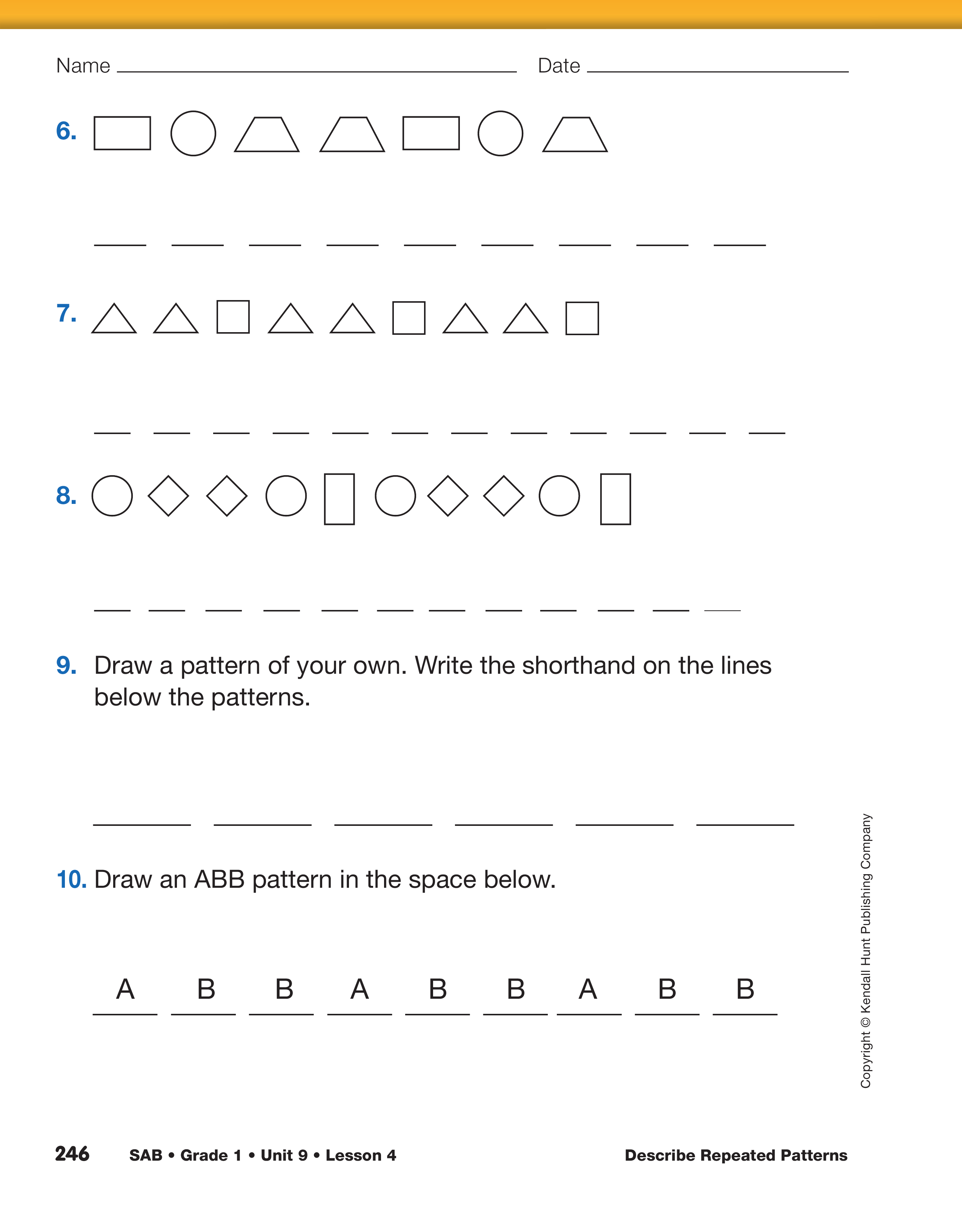Describe Repeated Patterns
Est. Class Sessions: 2Developing the Lesson
Part 1: Describing Patterns with Alphabet Shorthand
Identify Kid Patterns. Revisit the kid patterns from Lesson 3. Have students line up boy, girl, boy, girl, or use some other criteria to show an ABABAB pattern.
Ask:
Walk along the row of students, pointing at each and saying the pattern as you walk, boy, girl, boy, girl. Then do the same using the alphabet shorthand, ABABAB. Show a few other kid patterns that will give you different symbolic patterns, such as ABBABB, AABBAABB, AABCAABC, and so on. Ask the same types of questions. Have students extend the patterns and represent them using the appropriate alphabet shorthand.
Patterns with Colors and Shapes. Show the display of the Colors and Shapes pages in the Student Activity Book. Work on Question 1 with students and guide them by pointing to each circle and saying the colors aloud.
Ask:
Have students follow the same procedures with Questions 2–3.
Students use crayons to make their own color patterns for Questions 4–5. Invite students to show the patterns they created and challenge the class to identify the pattern unit and tell how the pattern should be extended.
For Questions 6–8, students identify the shape patterns and use alphabet shorthand to describe it. Draw attention to the fact that the color pattern for Question 1 and the shape pattern for Question 6 are both represented by the same alphabet shorthand, ABABABAB.
Ask:
See Sample Dialog 1 to guide the discussion for this pattern in Question 6.
For Question 9, ask students to fill in the missing shapes in the top row and complete the alphabet shorthand in the second row.
Have students make up their own shape pattern for Question 10 using two or three shapes. Direct students to draw their pattern in the space above the lines and write the alphabet shorthand on the lines below their shape pattern.
As they are working on the page, circulate among the students to identify potential problems or difficulties. When appropriate, ask students to tell you how they can identify the pattern unit, how many objects are in the pattern unit, or what letters they need to record.
Patterns with Pictures and Shapes. Students should now work to complete the Dinosaurs, Diamonds, and Dog Biscuits pages in the Student Activity Book. Use a display of the pages to facilitate discussion. Remind students to first scan the pattern to see how many different elements appear so they know how many letters to use. Ask peers to check one another's patterns and recording methods.
For Questions 1–3, students write the alphabet shorthand below the pictures. You can point out that, once again, the first pattern is the ABABAB pattern.
For Questions 4–8, explain that students have to extend the pattern on the top row so that there is a shape above each line.
For Question 9, students should draw their own pattern and write the alphabet shorthand below their pattern.
Have students draw an ABB pattern for Question 10. See Figure 1 for the alphabet shorthand pattern units on this page.


















